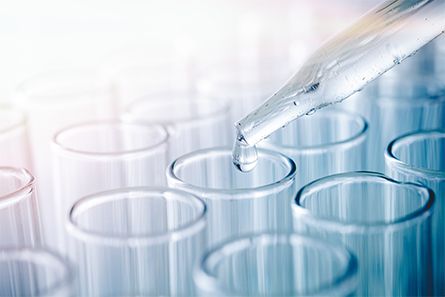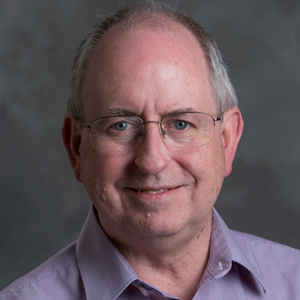How to destroy a ‘forever chemical’
PFAS chemicals seemed like a good idea at first. As Teflon, they made pots easier to clean starting in the 1940s. They made jackets waterproof and carpets stain-resistant. Food wrappers, firefighting foam, even makeup seemed better with perfluoroalkyl and polyfluoroalkyl substances.

Then tests started detecting PFAS in people’s blood.
Today, PFAS are pervasive in soil, dust and drinking water around the world. Studies suggest they’re in 98% of Americans’ bodies, where they’ve been associated with health problems including thyroid disease, liver damage and kidney and testicular cancer. There are now over 9,000 types of PFAS. They’re often referred to as “forever chemicals” because the same properties that make them so useful also ensure they don’t break down in nature.
Scientists are working on methods to capture these synthetic chemicals and destroy them, but it isn’t simple.
The latest breakthrough, published Aug. 18, 2022, in the journal Science, shows how one class of PFAS can be broken down into mostly harmless components using sodium hydroxide, or lye, an inexpensive compound used in soap. It isn’t an immediate solution to this vast problem, but it offers new insight.
Biochemist A. Daniel Jones and soil scientist Hui Li work on PFAS solutions at the Michigan State University and explained the promising PFAS destruction techniques being tested today.
How do PFAS get from everyday products into water, soil and eventually humans?
There are two main exposure pathways for PFAS to get into humans — drinking water and food consumption.
PFAS can get into soil through land application of biosolids, that is, sludge from wastewater treatment, and can they leach out from landfills. If contaminated biosolids are applied to farm fields as fertilizer, PFAS can get into water and into crops and vegetables.
For example, livestock can consume PFAS through the crops they eat and water they drink. There have been cases reported in Michigan, Maine and New Mexico of elevated levels of PFAS in beef and in dairy cows. How big the potential risk is to humans is still largely unknown.

Scientists in our group at Michigan State University are working on materials added to soil that could prevent plants from taking up PFAS, but it would leave PFAS in the soil.
The problem is that these chemicals are everywhere, and there is no natural process in water or soil that breaks them down. Many consumer products are loaded with PFAS, including makeup, dental floss, guitar strings and ski wax.
How are remediation projects removing PFAS contamination now?
Methods exist for filtering them out of water. The chemicals will stick to activated carbon, for example. But these methods are expensive for large-scale projects, and you still have to get rid of the chemicals.
For example, near a former military base near Sacramento, California, there is a huge activated carbon tank that takes in about 1,500 gallons of contaminated groundwater per minute, filters it and then pumps it underground. That remediation project has cost over $3 million, but it prevents PFAS from moving into drinking water the community uses.
Filtering is just one step. Once PFAS is captured, then you have to dispose of PFAS-loaded activated carbons, and PFAS still moves around. If you bury contaminated materials in a landfill or elsewhere, PFAS will eventually leach out. That’s why finding ways to destroy it are essential.
What are the most promising methods scientists have found for breaking down PFAS?
The most common method of destroying PFAS is incineration, but most PFAS are remarkably resistant to being burned. That’s why they’re in firefighting foams.
PFAS have multiple fluorine atoms attached to a carbon atom, and the bond between carbon and fluorine is one of the strongest. Normally to burn something, you have to break the bond, but fluorine resists breaking off from carbon. Most PFAS will break down completely at incineration temperatures around 1,500 degrees Celsius (2,730 degrees Fahrenheit), but it’s energy intensive and suitable incinerators are scarce.
There are several other experimental techniques that are promising but haven’t been scaled up to treat large amounts of the chemicals.
A group at Battelle has developed supercritical water oxidation to destroy PFAS. High temperatures and pressures change the state of water, accelerating chemistry in a way that can destroy hazardous substances. However, scaling up remains a challenge.
Others are working with plasma reactors, which use water, electricity and argon gas to break down PFAS. They’re fast, but also not easy to scale up.
The method described in the new paper, led by scientists at Northwestern, is promising for what they’ve learned about how to break up PFAS. It won’t scale up to industrial treatment, and it uses dimethyl sulfoxide, or DMSO, but these findings will guide future discoveries about what might work.
What are we likely to see in the future?
A lot will depend on what we learn about where humans’ PFAS exposure is primarily coming from.
If the exposure is mostly from drinking water, there are more methods with potential. It’s possible it could eventually be destroyed at the household level with electro-chemical methods, but there are also potential risks that remain to be understood, such as converting common substances such as chloride into more toxic byproducts.
The big challenge of remediation is making sure we don’t make the problem worse by releasing other gases or creating harmful chemicals. Humans have a long history of trying to solve problems and making things worse. Refrigerators are a great example. Freon, a chlorofluorocarbon, was the solution to replace toxic and flammable ammonia in refrigerators, but then it caused stratospheric ozone depletion. It was replaced with hydrofluorocarbons, which now contribute to climate change.
If there’s a lesson to be learned, it’s that we need to think through the full life cycle of products. How long do we really need chemicals to last?![]()
This article is republished from The Conversation under a Creative Commons license. Read the original article.
Enjoy reading ASBMB Today?
Become a member to receive the print edition four times a year and the digital edition monthly.
Learn moreGet the latest from ASBMB Today
Enter your email address, and we’ll send you a weekly email with recent articles, interviews and more.
Latest in Science
Science highlights or most popular articles

Bacteriophage protein could make queso fresco safer
Researchers characterized the structure and function of PlyP100, a bacteriophage protein that shows promise as a food-safe antimicrobial for preventing Listeria monocytogenes growth in fresh cheeses.

Building the blueprint to block HIV
Wesley Sundquist will present his work on the HIV capsid and revolutionary drug, Lenacapavir, at the ASBMB Annual Meeting, March 7–10, in Maryland.

Gut microbes hijack cancer pathway in high-fat diets
Researchers at the Feinstein Institutes for Medical Research found that a high-fat diet increases ammonia-producing bacteria in the gut microbiome of mice, which in turn disrupts TGF-β signaling and promotes colorectal cancer.

Mapping fentanyl’s cellular footprint
Using a new imaging method, researchers at State University of New York at Buffalo traced fentanyl’s effects inside brain immune cells, revealing how the drug alters lipid droplets, pointing to new paths for addiction diagnostics.

Designing life’s building blocks with AI
Tanja Kortemme, a professor at the University of California, San Francisco, will discuss her research using computational biology to engineer proteins at the 2026 ASBMB Annual Meeting.

Cholesterol as a novel biomarker for Fragile X syndrome
Researchers in Quebec identified lower levels of a brain cholesterol metabolite, 24-hydroxycholesterol, in patients with fragile X syndrome, a finding that could provide a simple blood-based biomarker for understanding and managing the condition.


